The Duncan Rules: Defensive Picture Pages
[Ed-Ace: Bumped for some great film analysis that backs up a statistical trend we've picked up on recently. Added a couple notes and the pretty photo.]

Has Luke Yaklich devised a defense that makes Duncan Robinson effective? [Campredon]
On the podcast this week, Brian and Ace talked about how Duncan has improved his on ball defense from 23rd percentile to “almost” average (no numbers given but I assume somewhere in the 40th percentile). [Ed-Ace: He's since dropped just below that mark to 37th, but he's in the 63rd precentile as a post defender, which you will see is quite relevant.]
One explanation mentioned is that he seems to be defending the post more frequently than last year relative to defending the perimeter. [Ed-Ace; 17.9% of his defensive possessions are on post-ups in 2017-18 compared to 5.5% last season.] This is obviously something Michigan would want since he’s much more capable of using his length to make shots tough in the post rather than trying to guard the perimeter.
If we have a hard time getting Moe Wagner good inside opportunities when he has 6’3 guys on him, surely Duncan can hold his own on non-centers in the post, especially since very few guys are good at posting up in modern basketball. Unless you’re Nick Ward or Isaac Haas or Caleb Wesson, being asked to post up is like a home run hitter being asked to bunt. It’s just not going to go well at an acceptable rate.
The challenge is that when you have a weakness on defense, offenses can usually leverage that weakness. An opponent that doesn’t want to post up, but wants to take a guy on the perimeter should surely be able to put that guy in a position to need to defend the perimeter, right?
I noticed in the Wisconsin game that we’re countering this with what I’m referring to as the “The Duncan Rules.” In certain instances we are applying a switching scheme on the weak side that essentially amounts to running a two-man zone that keeps Duncan in the paint. And as far as I can tell (don’t have time to watch too much film on this), I’ve only seen it applied when Duncan, specifically, is defending a guy on the block on the weak side, with another offensive player on the weakside wing, and it's usually when a ball screen is being run on the other side of the court. I’ve picture paged three such instances.
[Hit THE JUMP for picture pages and some more notes on the defense.]
The first was in the second half against Wisconsin. You’ll see here Duncan is defending down low with Simmons on the same side wing and the ball is being reversed via ball screen.
Duncan’s man goes to the top of the key and instead of following him, Duncan is screaming and pointing for Simmons to switch onto #35.
Simmons is way late and #35 drills the wide open three.
Simmons was immediately pulled and this is exactly what Beilein was talking about a couple weeks ago when he said Simmons was struggling to pick up M’s defensive schemes. This is a next-level, slighly mad-scientist concept that Simmons has clearly not run before. Most switching in man defenses occurs during a screen. You get screened or you man sets a screen and you switch. This type of switching isn't an easy concept, especially if the rules are only on for Duncan. That said, this is clearly a part of the Wisconsin offense that they have worked on in practice and have to be aware of.
Wisconsin ran the exact same action two plays later with MAAR on the wing.
Again, Duncan is screaming and pointing even at senior MAAR to switch onto Duncan’s man who is flashing to the top of the key.
MAAR gets there slightly quicker - you can see that he is closing out at 6 feet away and the ball has not arrived yet. It’s enough to close out and put MAAR in a position of defending a potential dribble drive while Duncan is able to cover the (typically) less threatening penetrator in the corner while also helping on the roll man.
As an example that this isn’t something they specifically did for plays Wisconsin ran, I noticed it in the OSU game with different action but the same setup. Here Duncan is on KBD on the weakside block with Poole defending Dakich on the wing and the ball again going the other way on a ball screen (which was slipped/faked).
Dakich goes baseline to the ball side so OSU can isolate KBD on Duncan. Except Duncan goes with Dakich and Poole takes KBD.
Poole actually did a good job of defending KBD here, forcing him into a drive, and beating him to the spot to force a tough 12 foot attempt. Unfortunately, this was the one that Wagner kind of inexplicably tried to challenge it despite having no chance (and despite it being the exact shot you want to give up) and he fouled KBD.
I'm not sure how long they've been doing this and it seemed like there were some growing pains during Wisconsin such that we gave up 50 (!!) to Wisconsin in the second half.
But it did seem to help with Iowa and OSU (I wrote this prior to PSU). If executed properly it allows Duncan to be guarding a guy in the post should the ball come his direction, and if the ball goes the other way, it puts him on the less threatening guy in the weakside corner while keeping him as the taller help defender on the pick and roll. It also allows the opponent at the top of the key who is only a pass away and in a better position to drive in either direction to be guarded by a quicker player. This is a really good example of the defensive coaches (Yaklich likely) putting guys in position to play their strengths, which was mentioned in the excellent Michigan Daily piece shared on the board.
Other notes: I didn’t completely chart the OSU game, but I did chart Livers on KBD and he was outstanding (0-4, 2 TOs forced and only 2 shooting fouls given up).
Matthews was also good when switched onto KBD. There was a play on which Matthews was switched onto KBD and forced a missed layup after which KBD also missed a putback (so 0-2 on Matthews there), which Tate, who was being guarded by Duncan, rebounded and put back successfully. Tate also had a putback on MAAR after a switch.
I don't know where his other 3 OREBs came from but when going through parts of this game, it was clear Matthews was better than it seemed on Tate and a lot of Tate's (good) work was done on MAAR and Duncan after switches.
OSU’s counter to Michigan switching was to let Tate go to work and he’s a better post player than KBD so it was effective.
February 22nd, 2018 at 6:47 PM ^
Love stuff like this. What an informative post.
February 22nd, 2018 at 7:06 PM ^
February 22nd, 2018 at 7:20 PM ^
Is the picture blocking the sidebar for anyone else?
February 22nd, 2018 at 7:21 PM ^
that picture destoyed my computer
February 22nd, 2018 at 7:21 PM ^
I freaked out about this being on the front page with some typos and when I edited, your photo blew up. Sorry! I'll see if I can figure out how to fix.
February 22nd, 2018 at 7:21 PM ^
Fixed. This is really awesome stuff.
February 22nd, 2018 at 7:23 PM ^
February 22nd, 2018 at 7:24 PM ^
Great job! I'm glad that Beilein has found somebody(ies) who can scheme defensively, and, of course, way to go Duncan! Now if he can stay hot, there's a reasonable chance of making the sweet 16. Who would have thunk?
February 22nd, 2018 at 10:41 PM ^
and think he's got a good shot at succeeding Beilein. If he can download 90-95% of Beilein's offensive brain while he's here, he'd be an incredible tactician. He seems like a good motivator. Only piece left would be recruiting.
EDIT: Whoops meant to respond to the post above.
February 22nd, 2018 at 7:34 PM ^
Good stuff, man.
February 22nd, 2018 at 8:43 PM ^
Very insightful!
February 22nd, 2018 at 9:09 PM ^
February 22nd, 2018 at 9:16 PM ^
February 23rd, 2018 at 10:01 AM ^
February 23rd, 2018 at 12:26 PM ^
Love the detail and noticing the off ball switching. Great pick up
February 23rd, 2018 at 12:57 PM ^
Insightful stuff; I'll definitely be watching for it next game.
February 23rd, 2018 at 3:02 PM ^
Next level work. Thank you for putting this together. I knew you were money on the board posts, but wow - this is professional blogger work right here. And Yak - that guy is incredible!
February 23rd, 2018 at 3:58 PM ^
This is interesting stuff for sure, and a nice catch. I'll be watching for it in coming games.
With that being said, I think it actually directly contradicts the hypothesis at the beginning of the post that "(Duncan) seems to be defending the post more frequently than last year relative to defending the perimeter. This is obviously something Michigan would want since he’s much more capable of using his length to make shots tough in the post rather than trying to guard the perimeter." While I don't disagree that Duncan has looked pretty adept defending post-ups in recent games, if you take a closer look at all three of these plays that have been clipped, you'll actually notice that the action is designed to switch Duncan off of a post player and onto a wing/guard/shooting threat.
Plays 1 and 2: Robinson is looking to switch off of Nate Reuvers, a 6'10 forward who has attempted nearly 70% of his shots inside the arc, onto Brevin Pritzl, a 6'3 guard who has attempted 64% of his shots from three-point range.
Play 3: Robinson switches off of Keita Bates-Diop (don't think I need to mention his skillset) onto Andrew Dakich (ditto).
So, while Duncan may be defending post-ups better and more, these picture pages would not support the notion that the coaches are trying to get him off of shooters and into potential post-up D situations.
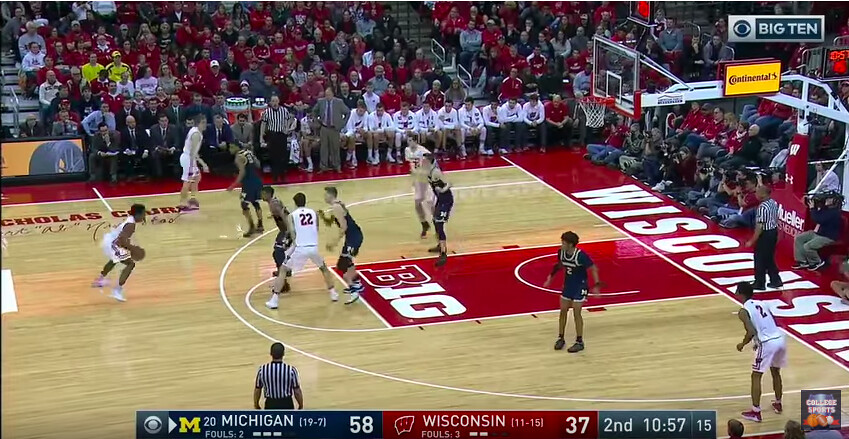

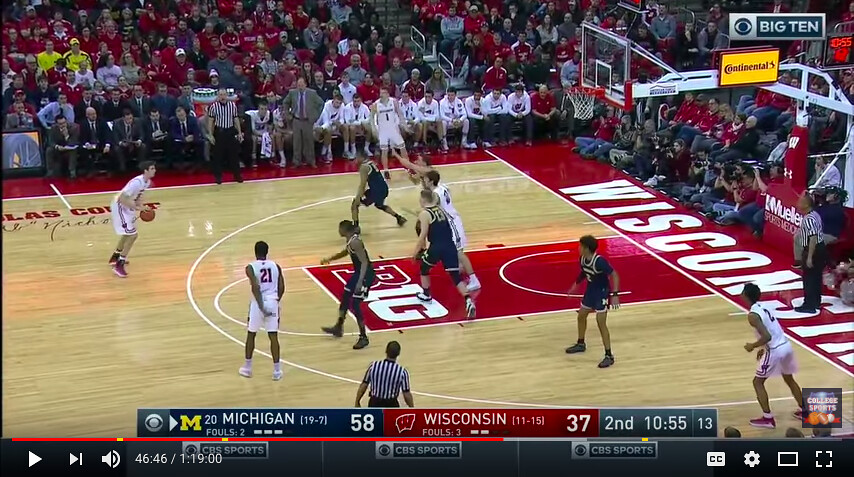
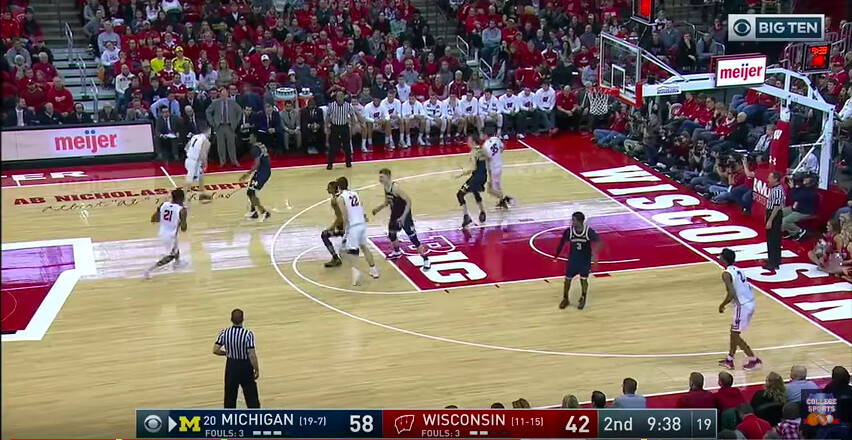
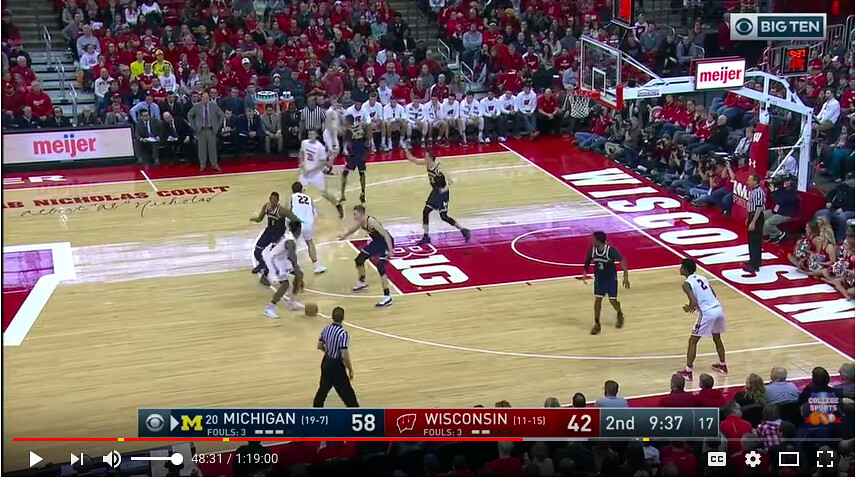
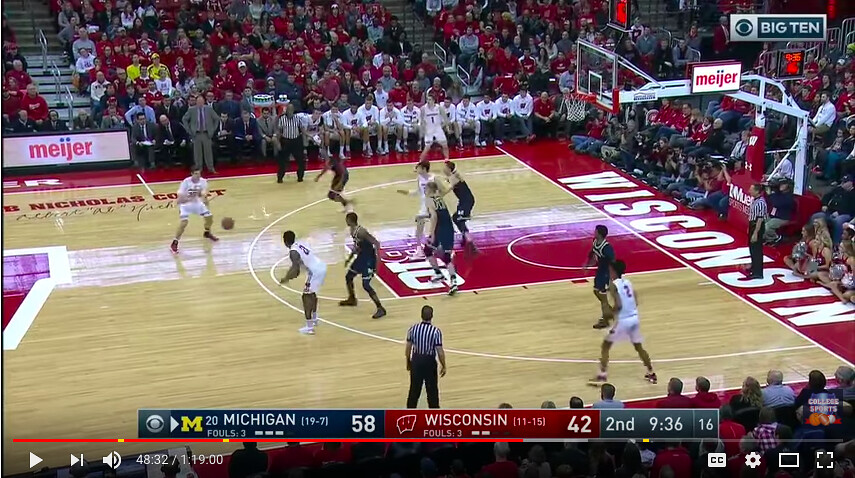
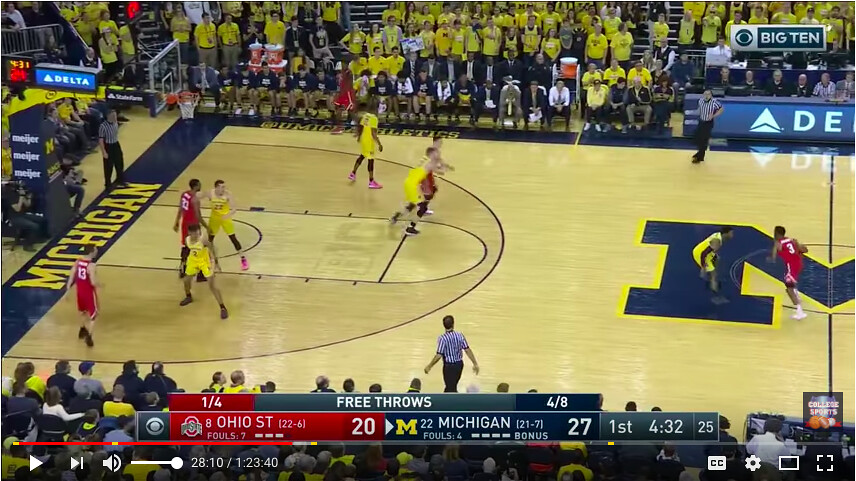
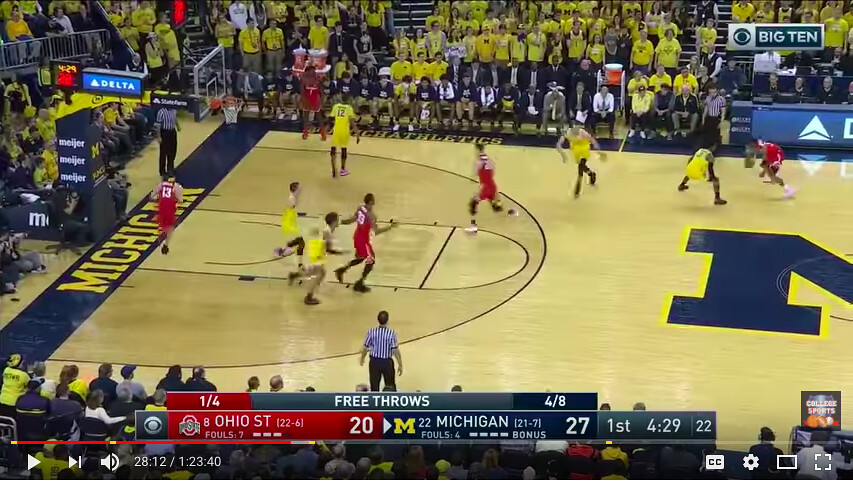
Comments